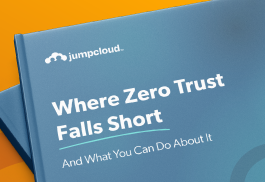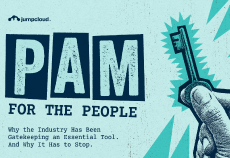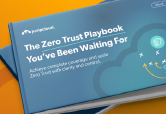Zero Trust has become a must-have in modern cybersecurity. Many organizations start strong — enabling multi-factor authentication (MFA) and locking down admin accounts.
But progress often stalls after those early wins. As complexity grows, momentum fades. And without a clear plan to scale, Zero Trust initiatives tend to lose direction.
The real challenge is executing a Zero Trust strategy that works at scale. That’s where a phased rollout can make all the difference, helping teams move forward without getting overwhelmed.
The Common Reasons Zero Trust Efforts Slow Down
According to Gartner, only 16% of organizations have Zero Trust protections covering most (75% or more) of their systems, users, and infrastructure. That means the majority are stuck in early or partial rollout stages.
Limiting Zero Trust to critical areas like login or admin access creates several challenges:
- Security gaps persist in other parts of the environment.
- Enforcement is inconsistent across platforms and tools.
- IT teams lack visibility, hindering threat monitoring.
- Manual effort increases, particularly when managing disconnected systems.
Here are the common blockers that slow down Zero Trust progress:
- Legacy systems that can’t support modern security controls.
- Fragmented tools that don’t work well together.
- Internal resistance due to perceived friction.
- Uncertainty around what to prioritize and protect first.
- Competing IT and security initiatives.
A phased approach helps address these issues. It gives teams a step-by-step path that aligns with their capabilities. And keeps progress moving at a realistic, manageable pace.
The Case for a Phased Rollout
Rolling out Zero Trust in phases helps you make steady progress, without overwhelming teams. Each step builds on the last, with a clear set of priorities to follow.
You start by reducing immediate risk. Then you introduce more context into access decisions. Finally, you focus on optimizing and scaling your protections for the long term.
Let’s take a look at how this Zero Trust model works and why it’s so effective.
Phase 1: Establishing Foundational Controls
Start with the basics. This phase focuses on low-friction, high-impact changes — closing common security gaps.
Key actions include:
- Enforcing MFA for everyone.
- Limiting access with least-privilege policies.
- Storing shared credentials securely.
- Removing default admin accounts.
- Turning off outdated protocols and services.
- Centralizing identity using a directory or identity provider.
This phase shrinks your attack surface and gives you a solid base for future improvements.
Phase 2: Expanding and Contextualizing Access Controls
Now, bring intelligence into your access decisions. Make choices based on real-time context — such as user identity, device health, location, and behavior.
Focus areas include:
- Using conditional access to evaluate login context.
- Replacing VPNs with application-specific access.
- Bringing unmanaged devices under governance.
- Enforcing device trust based on posture and policy.
- Extending Zero Trust coverage to more systems and cloud environments.
This phase gives you broader control and better visibility, without slowing down users.
Phase 3: Optimize, Automate, and Scale
Once core controls are in place, the focus shifts to operationalizing Zero Trust. This phase ensures protections are consistent, sustainable, and able to scale as your environment grows.
Prioritize:
- Automating provisioning and deprovisioning workflows.
- Fine-tuning alerting and risk detection.
- Centralizing logging, auditing, and reporting.
- Integrating Zero Trust into IT and security planning.
- Regularly reviewing and adjusting policies based on trends and business changes.
These measures help teams maintain security without adding overhead — making Zero Trust easier to manage over time.
Scale Your Zero Trust Program with Confidence
Zero Trust isn’t something you implement once and forget. It’s a long-term strategy that evolves with your environment. By rolling it out in phases, you create a path that’s sustainable, measurable, and aligned with your organization’s pace.
Each stage delivers tangible improvements while setting the foundation for the next, keeping teams aligned and momentum strong.
To dive deeper into this phased approach, download The Zero Trust Playbook. It walks you through each phase in detail, outlines rollout priorities, and includes a readiness checklist to help you assess your current state.







